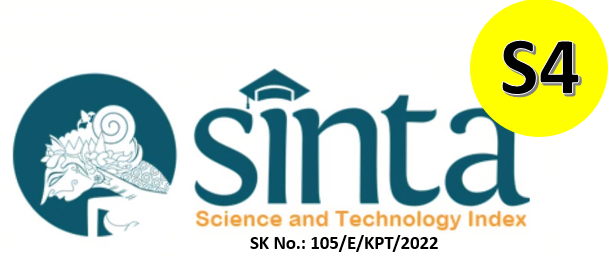Uji Ekstrak Bawang Putih Tunggal (Allium sativum L.) Terhadap Bakteriuria Escherichia coli Pada Calon Pekerja Migran Indonesia
DOI:
https://doi.org/10.29080/biotropic.2021.5.1.50-57Keywords:
bawang putih tunggal (Allium sativum L), infeksi saluran kemih, escherichia coli, calon pekerja migran IndonesiaAbstract
Garlic (Allium sativum L) is a tested type of phytopharmaca because it is proven to have beneficial benefits as antibacterial and protect the body from pathogens. The majority of Indonesian Migrant Workers, especially Prospective Indonesian Migrant Workers (CPMI), are indicated to be susceptible to Urinary Tract Infection (UTI), which is caused by the bacteriuria Escherichia coli. In this study, the crude extract of single garlic (A. sativum L) will be used as an antibacterial against E. coli bateriuria in the urine sample of CPMI, with variations in the concentration of single crude extract of garlic, namely; 0%, 25%, 50%, 75%, and 100%. This research was conducted in a period of 1 (one) year from January to December 2020, with urine research samples from CPMI in the Banyumas Regency area. Extraction was carried out by extracting a single garlic using 96% ethanol solvent in a ratio of 1: 1, then evaporated to produce a filtrate that would be tested with a varied concentrate composition. Isolation of bacteriuria in urine samples using EMBA selective media. From a total of 37 urine samples, 17 about 46% were positive for E. coli, and 20 samples were 54% negative for E. coli. Bacteriuria that was found challenged with crude garlic extract resulted in differences in the antibacterial test at several extract concentrations with amoxicillin positive control, with One Way Anova a P-value = 0.000 <0.05, and continued with the analysis of the Post Hoc Test and the Tuckey Test, that the garlic extract The single most effective used as an anti-bacterial agent is the concentration of 100%, resulting in an average inhibition of 12.81 mm. The ability of single garlic extract to inhibit increases with increasing extract concentrate.
Downloads
References
Abiy, Ephrem, and Asefaw Berhe. 2016. “Anti-Bacterial Effect of Garlic (Allium Sativum) against Clinical Isolates of Staphylococcus Aureus and Escherichia Coli from Patients Attending Hawassa Referral Hospital, Ethiopia.” Journal of Infectious Diseases and Treatment 02(02): 1–5.
Adhuri, Iesha Kinanti, Tri Nur Kristina, and Arlita Leniseptaria Antari. 2018. “Perbedaan Potensi Antibakteri Bawang Putih Tunggal Dengan Bawang Putih Majemuk Terhadap Salmonella Typhi.” Diponegoro Medical Journal (Jurnal Kedokteran Diponegoro) 7(2): 415–23.
Arimaswati, Arimaswati, Yessy Toding Mendaun, and Yenti Purnamasari. 2019. “Uji Aktivitas Antibakteri Ekstrak Kasar Bawang Putih (Allium Sativum ) Terhadap Bakteri Shigella Dysenteriae Yang Resisten Terhadap Ampisilin.” Medula 6(2): 541–46.
Brubaker, Linda, and Alan J. Wolfe. 2017. “The Female Urinary Microbiota/Microbiome: Clinical and Research Implications.” Rambam Maimonides Medical Journal 8(2): e0015.
Eka, Christine, Wulandari Harianto, Tabita Hasian, and Tri Dewanti Widyaningsih. 2018. “PADA TIKUS WISTAR JANTAN YANG DIINDUKSI PARASETAMOL The Effectiveness Hepatoprotector of Single Clove Garlic Extract against Paracetamol Induced Hepatotoxicity in Male Wistar Rats.” 6(4): 1–10.
Gaherwal, S, F Johar, N Wast, and M M Prakash. 2014. “Anti-Bacterial Activities of Allium Sativum Against Escherichia Coli, Salmonella Ser. Typhi and Staphylococcus Aureus.” International Journal of Microbiological Research 5(1): 19–22.
Katrin, Dina, Nora Idiawati, and Berlian Sitorus. 2015. “Uji Aktivitas Antibakteri Dari Ekstrak Daun Malek ( Litsea Graciae Vidal) Terhadap Bakteri Stapylococcus Aureus Dan Escherichia Coli.” Jkk 4(1): 7–12. http://jurnal.untan.ac.id.
Petropoulos, Spyridon et al. 2018. “Antimicrobial and Antioxidant Properties of Various Greek Garlic Genotypes.” Food Chemistry 245(August 2017): 7–12.
Pusat Penelitian, Pengembangan dan Informasi (PUSLITFO). 2019. September Data Penempatan Dan Perlindungan PMI.
Rahman, Ave Olivia. 2017. “Uji Kepekaan Bakteri Yang Diisolasi Dari Pasien Dengan Bakteriuria Terhadap Antibiotik Amoksisilin, Levofloksasin Dan Ciprofloksasin Di Laboratorium Mikrobiologi Rsud Raden Mattaher Jambi Periode Oktober - November 2016.” JAMBI MEDICAL JOURNAL “Jurnal Kedokteran dan Kesehatan” 5(2): 87–94. https://online-journal.unja.ac.id/kedokteran/article/view/4116.
Republik Indonesia, Presiden. 2011. “Peraturan Presiden RI No.64 Tahun 2011 Tentang Pemeriksaan Kesehatan Dan Psikologi Calon Tenaga Kerja Indonesia.” https://jdih.kemenkeu.go.id/fullText/2011/64TAHUN2011PERPRES.HTM.
Schmidt, K. et al. 2017. “Identification of Bacterial Pathogens and Antimicrobial Resistance Directly from Clinical Urines by Nanopore-Based Metagenomic Sequencing.” Journal of Antimicrobial Chemotherapy 72(1): 104–14.













